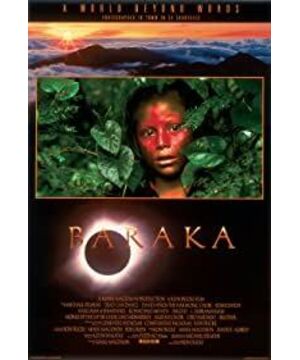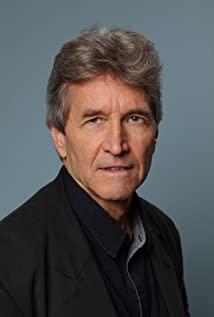If you want to describe Baraka in the simplest sentence, then this movie is probably a series of photographic works that are stacked together. The framing of photography and the use of the latest film technology allow us to capture any segment of the film at will, and it can be an independent photographic work with complete composition and saturated colors.
The director chose to use new technology to shoot around a large circle of the earth, using the clearest and direct perspective to ask the audience to directly perceive the world in which humans live. Therefore, it is not difficult to imagine how excited some environmental groups will be when they see this movie. It is rare for the most authentic and beautiful earth to be presented to the audience in such a complete and planned way. The film constantly shuttles back and forth between the sparsely populated nature and the bustling metropolis. The director is undoubtedly challenging the world as we perceive it.
The reason why this film has not become a typical National Geographic channel program is not just a topic that Baraka does not focus on on the surface of the main line of the movie, but more importantly, it does not have a narration or subtitles. In the development of modern film, the important Direct Cinema emphasizes the direct "seeing" of the audience. The audience represented by the camera disappears from the shooting scene invisibly, but Baraka is obviously not only that. Many pictures in the film are actually artificial. Deliberately created, such as the gaze of three college girls at Tokyo Tram Station at the camera, such a scene will never happen naturally. A similar scene also appeared in front of the soldiers serving the state power apparatus in front of the Great Hall of the People in Beijing. The gazes of the three People's Liberation Army were exactly the same as the gazes of the three Japanese college girls. They got rid of the coats of these different social and national identities. People are so similar to each other. Japanese female students may not be "captured" by the state power apparatus, but are they "kidnapped" in a higher level of social value system? Ever since, what this movie allows us to see is not only the subject in front of the camera, but also the photographer(s) behind the camera and their attitude; in other words, the focus of this movie is not on us See what, but to understand what the director wants us to see and why the director wants us to see those things.
Inevitably, Baraka has made some articles on the alienation and alienation of people whose "modernity" is most often discussed. The subject of the material also "inevitably" falls on the monster organism of Tokyo, a giant metropolis. Tokyo is the perfect combination of social machines and the city. Public transport commuters composed of office workers, students, and idle people. Because of the dense population and the efficiency of transportation, they have no right to choose the commuting mode and can only follow the same fate as others. Commuters in this city are like parts coming and going freely on the conveyor belt of the standardized production process, seeking the greatest law and order in the scientific mode. Individuals who are regarded as collectives, lack individuality, and have no face, each choose the conveyor belt that meets their needs, passively compromise with the repetitive and mechanical nature of the social machine, just like the chickens in the film are following the capitalist " "Commodity value" is graded separately in the panning system. There is no narration in the movie, but the expressions and gazes of commuters in the tram have already said too much. It is worth noting that the images of commuters in Tokyo are not completely presented naturally. The director has also interspersed many long lens clips deliberately played slowly in slow motion, focusing on those commuting. On the individual's face, a micro-realism of a seemingly collective commuting behavior is made.
On similar issues, Baraka also dealt with the "surplus exploitation" of capitalists in the capitalist world economic system and the "surplus of exploitation" in the corners of the city. Capitalists carry some of the "truth value" of capitalism and the vested interest class to exploit the public labor and mass culture, and then the unit "money" and "commercial value" used to measure everything in the business mechanism becomes capital. The only criterion in a socialist society. Therefore, after the "surplus exploitation" of the capitalist class, the camera turns to those people who live in the cracks of the city by picking up waste and picking up rubbish, and relying on the "surplus after exploitation" to make a living.
Regarding the background "music" of a movie, the most commonly used one is the "soundization of the landscape", or more precisely, those that are accurately recorded are the "sound landscape", which interacts with the image and the landscape in the movie. It also interacts for annotations. From the sound of the torrential water of the waterfall, the shouting and singing of the aboriginal people in the tribe, and even the rhythm of the fast and slow images in the Tokyo tram station echoing the rhythm of the background music, there is an invisibly balanced balance. In contrast, the sound and landscape in the city seem inorganic and lack a balanced and harmonious relationship.
In Baraka's images, contrasting methods of similar cultural behaviors of different cultures are often used, while emphasizing the diversity and commonality of human culture. So we can see the tattoos of Japanese men and women in some close-up shots, and the next image will be replaced by Venezuelan indigenous tattoos in a flash. The landscape is the result of the interaction between the natural environment and the culture, but the culture is determined by the conditions and appearance of the natural environment and the relationship with people. When the land is fixed, the flow and conflict of culture cause the balance of the landscape to be destroyed , This is the urban space under the operation of the global system. So I think of the ruin nature of Ban Yaming’s urban space. It seems that the building scaffolding in the Kowloon Peninsula of Hong Kong is under construction in the hollow shadow of the setting sun, and the jetliner that suddenly roars past the sky (the Kai Tak Airport at the time was still Use) received a silent response.
Other reflections on civilization and modernity can probably be glimpsed from the "gaze" of concentration camps and other slaughter spaces. The advancement of modern technology is not a bad thing in itself, the real key lies in how we use it. Technology can be helpful to human life, but if you look at new technology with other attitudes and motivations, it is a kind of persecution and oppression of human basic values. The scenes of religious rituals repeated in the film are the concrete manifestations of the value attitudes held by mankind to the space in which they live and their relationship with space. In the same way, the difference between urban and natural spaces does not lie in the space itself, but in people's attitude towards space and the relative relationship between space and people. Baraka reminded us to review this relationship again.
At the end of the movie is the dome of the mosque and the Catholic church, the Greek acropolis and the starry universe dome in the night sky. This is the epitome of the world we live in. The triangular relationship between man, nature and culture will always be our everything. And the space and landscape that we recognize is the whole wrestling process of a power relationship, a concrete result and a microcosm of the search for balance.
View more about Baraka reviews








